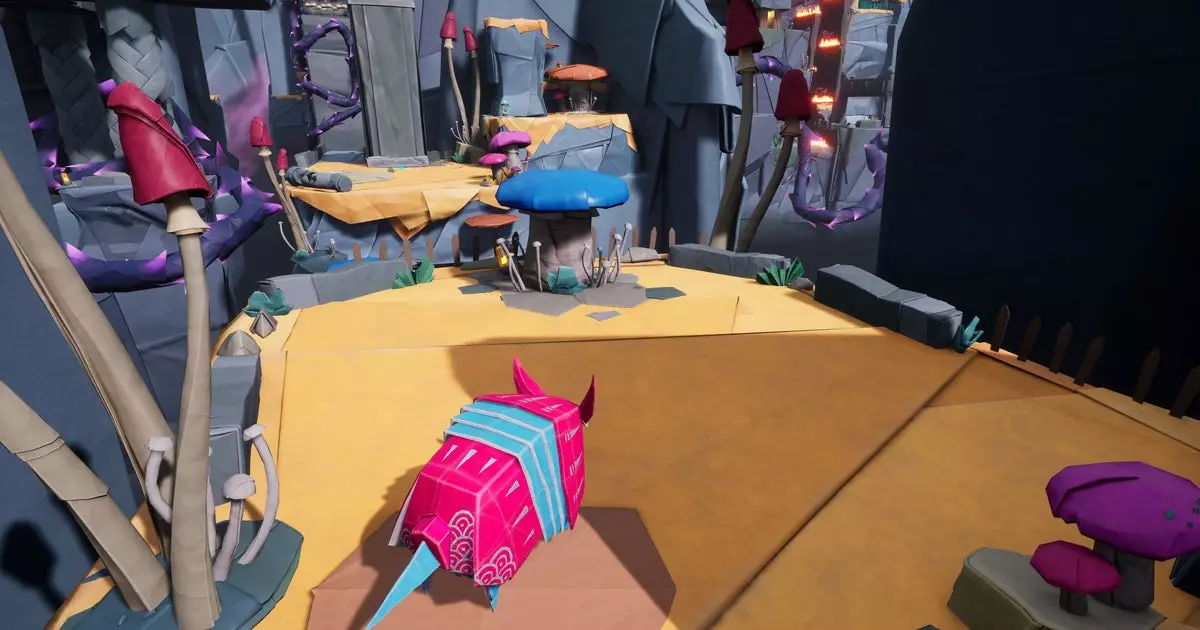In the digital age, where technology and art seem to coexist in perfect harmony, the title “Hirogami” brings forth a thoughtful juxtaposition—how can a game that highlights the vulnerability and beauty of paper art also embody the very digital medium that it critiques? This contradiction sets the stage for an exploration of our cultural affinity for nostalgia, as the game invites players to battle a plague of digital creatures in a world steeped in origami aesthetics. The irony here is not just a clever narrative device; it reveals our conflicting relationships with both the digital and analog realms.
“Hirogami,” as outlined by its promotional materials, positions itself as a 3D action platformer inspired by origami, a traditional Japanese art form known for its intricate folds and graceful forms. The premise allows players to take on the role of Hiro, a valiant paper figure capable of transforming into various whimsical forms. This inherent fluidity—rolling like a pinball as an origami armadillo or soaring as a paper plane—reflects a deep respect for the delicacy of traditional art. However, the game’s reliance on electronic devices to convey this theme brings forth an essential critique: can the beauty of paper truly be captured in an environment dominated by screens?
The narrative encapsulates an awe-inspiring mission—players are tasked to “cleanse the mind-warped inhabitants” of a world that has succumbed to the very digital blight that Hirogami seems to lament. The blight symbolizes not only the digital threats faced within the game’s universe but also serves as a metaphor for the decline of traditional media practices. Players are encouraged to utilize a range of “papery powers” to fend off this blight, wielding tools like a fan to disperse foes, which serves as a whimsical yet poignant reminder of paper’s multifaceted utility.
One of the striking elements of Hirogami’s premise is its invitation to explore the hidden secrets of a world interpreted through the fragility of paper. But as the digital landscape continues to evolve, what becomes of the traditional practices it seeks to honor? It is intriguing to consider how future generations might reminisce about our current moment, possibly reminiscing about the era of video game magazines with the same sentimental value we now ascribe to artistic movements like origami. The idea of embarking on an adventure from the perspective of a soggy magazine masthead is not only amusing but underscores the urgency of preserving fading media formats.
While the notion of a game dedicated to paper art may appear clichéd in some circles, Hirogami impresses with its lush art direction, combining vibrant colors and dynamic environments that celebrate the intricate beauty of paper. The developers at Bandai Namco’s Singapore branch, alongside Kakehashi Games, have crafted a unique visual experience that captivates players while simultaneously raising questions about the sustainability of art forms within a rapidly digitizing culture. One cannot help but feel a sense of enchantment as they navigate the delicate, interactive world designed with care.
Yet, amidst the visual splendor lies a crucial gap. The concept of engaging players in the actual folding process of origami is a missed opportunity. Rather than merely embodying various creatures at the speed of gameplay, integrating a minigame that allows players to experience the art of origami folding could forge a stronger connection to its traditions and techniques. What separates art from mere entertainment is the ability to slow down, reflect, and genuinely appreciate the effort involved in creation.
As we anticipate Hirogami’s release in 2025, one cannot escape the feeling that it may serve as a historical artifact—a time capsule encapsulating our current struggles and relationships with both digital media and traditional artistry. Perhaps, no matter how advanced our technologies become, there will always be a place for the intrinsic beauty found in the delicate folds of paper. Hirogami could serve as a reminder that while the digital age has transformed our ways of engaging with art, it has not obliterated the need for reverence toward the crafts that preceded it. Ultimately, Hirogami may not just represent a fun gaming experience; it could embody a crucial conversation about the balance between art forms in the digital age and the merit of protecting our cultural legacies.


Leave a Reply